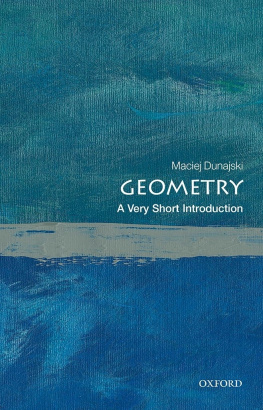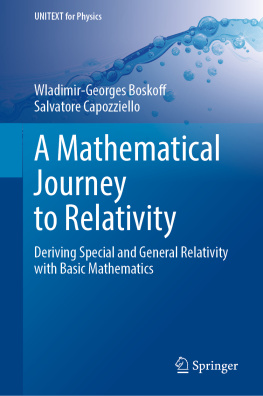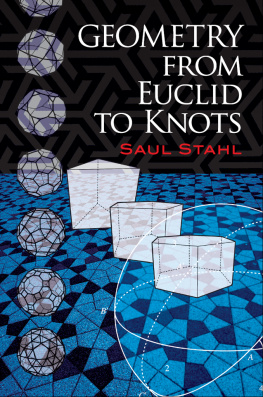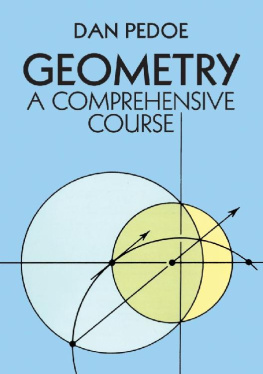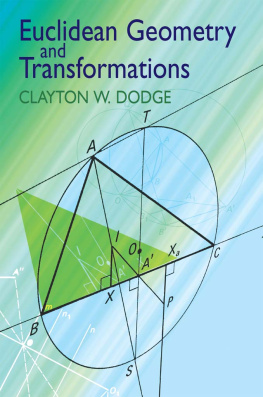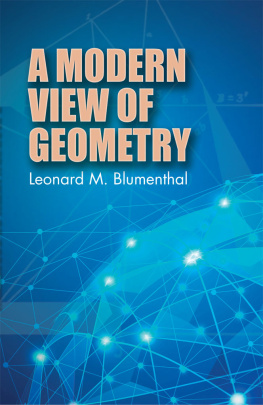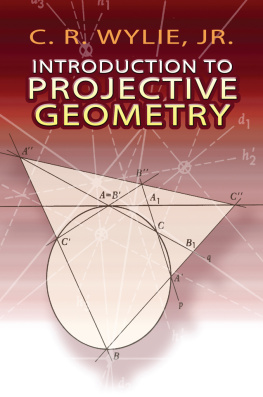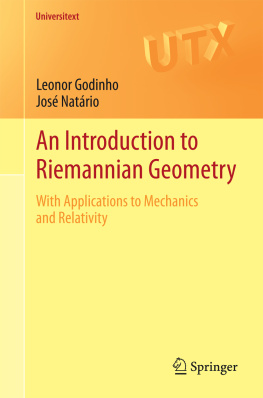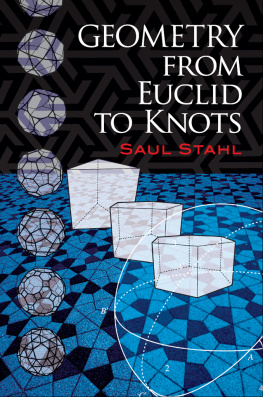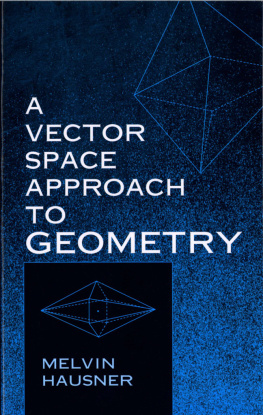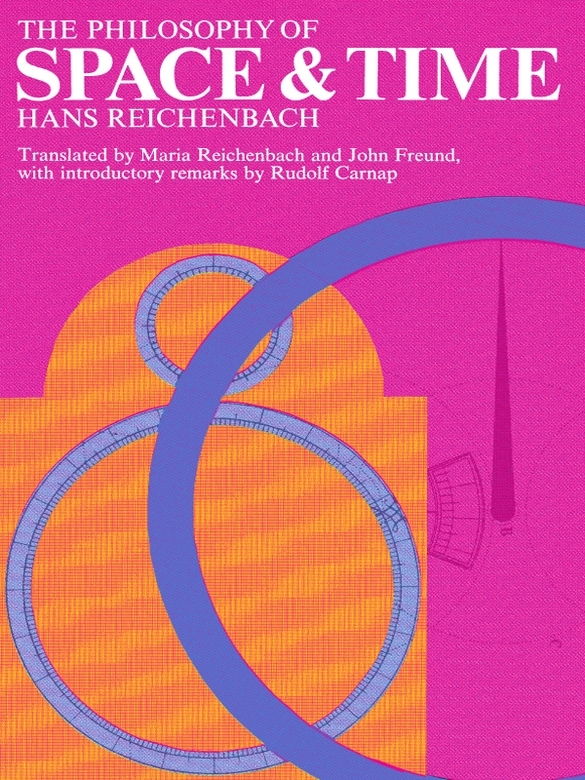CHAPTER I. SPACE
1. THE AXIOM OF THE PARALLELS AND NON-EUCLIDEAN GEOMETRY
In Euclids work, the geometrical achievements of the ancients reached their final form: geometry was established as a closed and complete system. The basis of the system was given by the geometrical axioms, from which all theorems were derived. The great practical significance of this construction consisted in the fact that it endowed geometry with a certainty never previously attained by any other science. The small number of axioms forming the foundation of the system were so self-evident that their truth was accepted without reservation. The entire construction of geometry was carried through by a skillful combination of the axioms alone, without any addition of further assumptions; the reliability of the logical inferences used in the proofs was so great that the derived theorems, which were sometimes quite involved, could be regarded as certain as the axioms. Geometry thus became the prototype of a demonstrable science, the first instance of a scientific rigor which, since that time, has been the ideal of every science. In particular, the philosophers of all ages have regarded it as their highest aim to prove their conclusions by the geometrical method.
Euclids axiomatic construction was also important in another respect. The problem of demonstrability of a science was solved by Euclid in so far as he had reduced the science to a system of axioms. But now arose the epistemological question how to justify the truth of those first assumptions. If the certainty of the axioms was transferred to the derived theorems by means of the system of logical concatenations, the problem of the truth of this involved construction was transferred, conversely, to the axioms. It is precisely the assertion of the truth of the axioms which epitomizes the problem of scientific knowledge, once the connection between axioms and theorems has been carried through. In other words: the implicational character of mathematical demonstrability was recognized, i.e., the undeniable fact that only the implication if a , then b is accessible to logical proof. The problem of the categorical assertion a is true b is true, which is no longer tied to the if, calls for an independent solution. The truth of the axioms, in fact, represents the intrinsic problem of every science. The axiomatic method has not been able to establish knowledge with absolute certainty; it could only reduce the question of such knowledge to a precise thesis and thus present it for philosophical discussion.
This effect of the axiomatic construction, however, was not recognized until long after Euclids time. Precise epistemological formulations could not be expected from a naive epoch, in which philosophy was not yet based upon well-developed special sciences, and thinkers concerned themselves with cruder things than the truth of simple and apparently self-evident axioms. Unless one was a skeptic, one was content with the fact that certain assumptions had to be believed axiomatically; analytical philosophy has learned mainly through Kants critical philosophy to discover genuine problems in questions previously utilized only by skeptics in order to deny the possibility of knowledge. These questions became the central problems of epistemology. For two thousand years the criticism of the axiomatic construction has remained within the frame of mathematical questions, the elaboration of which, however, led to peculiar discoveries, and eventually called for a return to philosophical investigations.
The mathematical question concerned the reducibility of the axiomatic system, i.e., the problem whether Euclids axioms represented ultimate propositions or whether there was a possibility of reducing them to still simpler and more self-evident statements. Since the individual axioms were quite different in character with respect to their immediacy, the question arose whether some of the more complicated axioms might be conceived as consequences of the simpler ones, i.e., whether they could be included among the theorems. In particular, the demonstrability of the axiom of the parallels was investigated. This axiom states that through a given point there is one and only one parallel to a given straight line (which does not go through the given point), i.e., one straight line which lies in the same plane with the first one and does not intersect it. At first glance this axiom appears to be self-evident. There is, however, something unsatisfactory about it, because it contains a statement about infinity; the assertion that the two lines do not intersect within a finite distance transcends all possible experience. The demonstrability of this axiom would have enhanced the certainty of geometry to a great extent, and the history of mathematics tells us that excellent mathematicians from Proclus to Gauss have tried in vain to solve the problem.
A new turn was given to the question through the discovery that it was possible to do without the axiom of parallels altogether. Instead of proving its truth the opposite method was employed: it was demonstrated that this axiom could be dispensed with. Although the existence of several parallels to a given line through one point contradicts the human power of visualization, this assumption could be introduced as an axiom, and a consistent geometry could be developed in combination with Euclids other axioms. This discovery was made almost simultaneously in the twenties of the last century by the Hungarian, Bolyai, and the Russian, Lobatschewsky; Gauss is said to have conceived the idea somewhat earlier without publishing it.
But what can we make of a geometry that assumes the opposite of the axiom of the parallels? In order to understand the possibility of a non-Euclidean geometry, it must be remembered that the axiomatic construction furnishes the proof of a statement in terms of logical derivations from the axioms alone. The drawing of a figure is only a means to assist visualization, but is never used as a factor in the proof; we know that a proof is also possible by the help of badly-drawn figures in which so-called congruent triangles have sides obviously different in length. It is not the immediate picture of the figure, but a concatenation of logical relations that compels us to accept the proof. This consideration holds equally well for non-Euclidean geometry; although the drawing looks like a badly-drawn figure, we can with its help discover whether the logical requirements have been satisfied, just as we can do in Euclidean geometry. This is why non-Euclidean geometry has been developed from its inception in an axiomatic construction; in contradistinction to Euclidean geometry where the theorems were known first and the axiomatic foundation was developed later, the axiomatic construction was the instrument of discovery in non-Euclidean geometry.
With this consideration, which was meant only to make non-Euclidean geometry plausible, we touch upon the problem of the visualization of geometry. Since this question will be treated at greater length in a later section, the remark about badly-drawn figures should be taken as a passing comment. What was intended was to stress the fact that the essence of a geometrical proof is contained in the logic of its derivations, not in the proportions of the figures. Non-Euclidean geometry is a logically constructible systemthis was the first and most important result established by its inventors.



